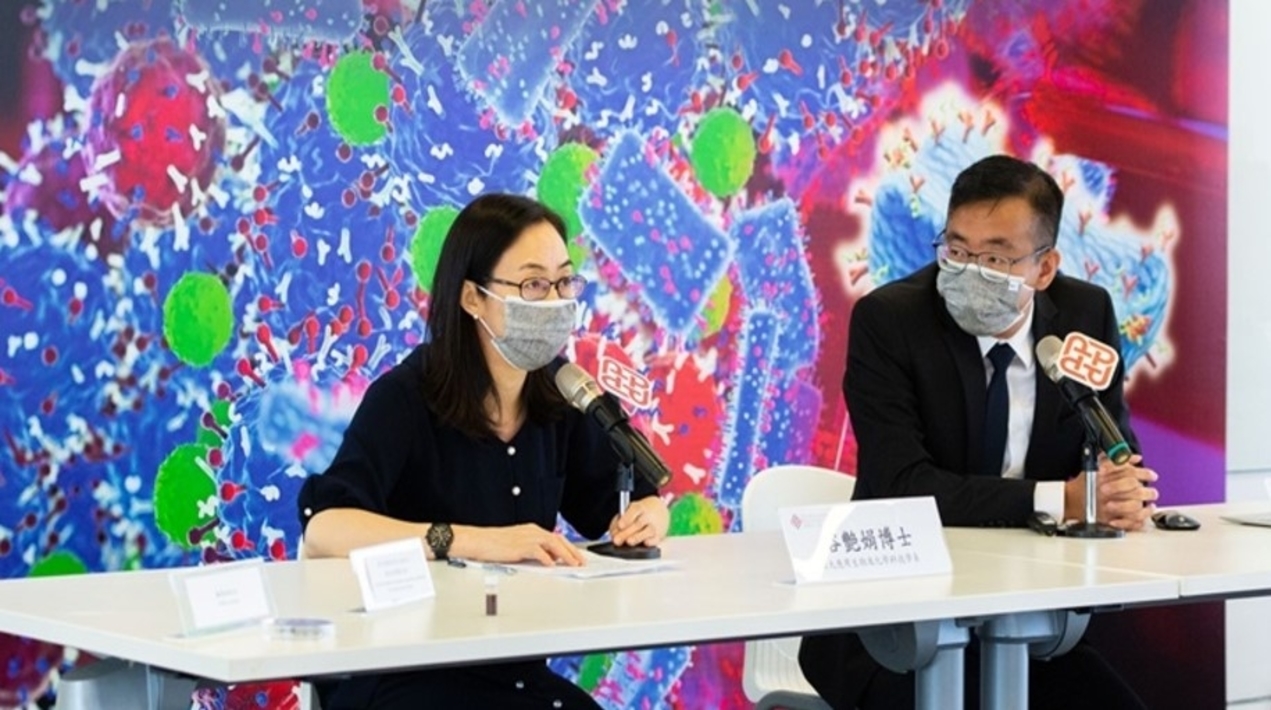
A research team from the Department of Applied Biology and Chemical Technology (ABCT) of The Hong Kong Polytechnic University (PolyU) has developed a novel type of biomimetic nanosheet with a multi-modal imaging function, which can track tumour development and treatment processes in real-time.
By harnessing two emerging cancer therapies, namely immunotherapy and photothermal therapy, the biomimetic nanosheet enables effective and precise treatment of tumours, which will significantly improve the therapeutic outcome of tumours, reduce side effects and increase patients’ survival rates. The research findings have been published in the prestigious international journal Advanced Science.
Professor Wing-tak WONG, Chair Professor of Chemical Technology of the ABCT of PolyU (also the Deputy President and Provost of PolyU), and his team started the research in 2018.
Synergistic therapy- Combining immunotherapy and photothermal therapy
New cancer treatments emerge since conventional cancer treatments like surgical therapy, chemotherapy and radiotherapy have different limitations and side effects.
Dr Summy Lo Wai-sum from ABCT said, “Immunotherapy and photothermal therapy are emerging methods which are expected to provide more options for cancer treatment. The biomimetic nanosheets developed by our team allow us to combine these two methods for synergistic therapy. By applying the synergistic therapy in an experiment for colorectal tumour treatment, we found that it is more effective than single therapy and has fewer side effects on the human body.”
The research team used 2D nanosheets (FePSe3) to develop a novel multifunctional nanomaterial for cancer theranostics. PD-1 (programmed cell death 1) exists on T cells, whereas PD-L1 (programmed cell death ligand-1) exists on tumour cells. Cancer cells inhibit the activation of the immune system and prevent T cells from attacking cancer cells through conjugating its PD-L1 with PD-1 on T cells.
The team, therefore, loaded the FePSe3 nanosheets with anti-PD-1 peptide (APP), which can block the conjugation between PD-1 on T-cells and PD-L1 on cancer cells to achieve efficient immunotherapy. Without directly attacking the cancer cells, blockage of the interaction between the PD-1 and PD-L1 has been reported to revoke T cell functions, leading to enhanced antitumour immunity.
After coating with cancer cell membranes, the nanosheets will become a biomimetic nanomaterial with tumour cell membrane characteristics that provide effective camouflage, enabling them to target the tumour site efficiently. Once the biomimetic nanosheets are injected into the living bodies, the cell membrane enveloping the nanosheets will preferentially adhere to cancer cells and slowly peel away, revealing the nanomaterial to begin immunotherapy.
Dr Lo explained, “The innate immune system attacks foreign objects which makes it difficult for the drug-loaded nanomaterials to reach the tumour site. The cancer cell membrane has a tumour-targeting characteristic that will converge homologous cells. It explains why the biomimetic nanosheets become attracted to the cancer cells when they are in close proximity with the cancer cells during blood circulation.
In addition, the large specific surface area of the 2D nanomaterials is conducive to improving the drug loading ratio of the anti-PD-1 peptide, which will help with enhancing the therapeutic efficiency, as well as reducing the drug dosage and hence alleviating side effects.”
On the other hand, the nanomaterials (FePSe3) chosen possess good photothermal conversion efficiency, and so they can convert near-infrared laser irradiation into heat to kill tumour cells directly, thus achieving effective photothermal therapy. The heat can further promote immunotherapy by effectively inhibiting tumour growth, which results in a synergistic effect of immunotherapy and photothermal therapy.
Three imaging modes to help real-time monitoring of cancer treatment
The PolyU-developed biomimetic nanosheets can also achieve the goals of theranostics. By harnessing magnetic, optical and thermal properties, the FePSe3 nanomaterials enable three imaging modalities, namely magnetic resonance imaging (MRI), photoacoustic imaging (PAI) and photothermal imaging (PTI), for real-time tracing and tracking of the tumour sites and the nanosheets, to achieve multimodal diagnosis in cancer treatment.
PolyU’s novel nanomaterial can facilitate theranostics by combining diagnosis, therapy and efficacy monitoring. It not only enables the imaging and treatment of tumours but also the real-time monitoring of treatment outcomes. The PolyU team carried out experiments on mice bearing subcutaneous colorectal tumours to investigate the application in living animals.
The study showed that the tumour volume had significantly reduced after 25 days of synergistic therapy, whereas the survival rate of the mice was three times higher than that of the control groups. The major organs of the mice, including the heart, liver, spleen, lung and kidney, showed no obvious inflammation and damage, demonstrating high biosafety and low toxicity.
The research team also utilised the MRI and photoacoustic imaging capabilities of the biomimetic nanosheet to observe the tumour for 24 hours, visualising the targeting and accumulation of the nano-theranostic material at the tumour site. Through photothermal imaging, it was observed that the nanomaterial can produce localised heat under near-infrared laser irradiation within a few minutes.
The experiment proved that PolyU-developed biomimetic nanosheets, with multi-modal imaging capability, can offer accurate and comprehensive detection and evaluation of tumour development, ultimately achieving theranostics alongside synergistic therapeutic effects.
Dr Lo said, “In view of the fact that there is a lack of efficient and safe theranostics materials, PolyU’s biomimetic nanomaterial has promising prospects in application. In future, our team will further expand the application of this nanomaterial to other cancer therapies and study the metabolism of the nanosheet in the living body, hoping that more cancer patients can benefit from new theranostic methods.”
















